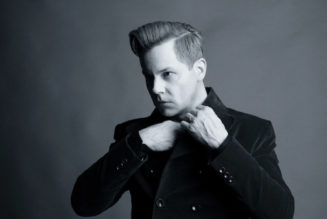
Welcome to New Retro Week, a celebration of the biggest artists, hits, and cultural moments that made 2012 a seminal year in pop. MTV News is looking back to see what lies ahead: These essays showcase how today’s blueprint was laid a decade ago. Step into our time machine.
When Spotify hit the United States in the summer of 2011, it arrived with a cavalcade of enthusiasm. “Finally” and “at last” were used in headlines announcing its launch. An NPR explainer laid out why the moment marked a milestone in the digital music era, describing Spotify’s “huge catalog of music that can be streamed, combined into playlists and accessed from any computer with an Internet connection, all for free.” The New York Times went much pithier: “New Service Offers Music in Quantity, Not by Song.”
Through its first few years of operations in the U.S., Spotify both restructured and rattled the music industry. It also came to define what it means to experience and share music in the 21st century. A top hits playlist the platform published to close out 2012, for example, features one song that’s since amassed over a billion streams (“Somebody That I Used to Know” by Gotye and Kimbra) and others with hundreds of millions more (“Call Me Maybe” and “We Are Young,” obviously). But Spotify had its detractors from the very beginning. And in the wake of its largest reckoning yet, its future may depend on revisiting them.
2022 began with Neil Young pulling his music from Spotify and inspiring several major artists to do the same. The initial impulse to do so was in protest of podcaster Joe Rogan — recipient of a deal originally thought to be worth $100 million but recently estimated to be potentially higher than $200 million from Spotify — spreading COVID-19 misinformation to his tens of millions of listeners. Young’s action galvanized artists like Joni Mitchell and India.Arie to remove their music, including for, among other issues, the streaming giant’s yearslong devaluation of artists, part of the very same business practices that helped it become a global juggernaut and remake the music industry over the past 10 years.
“Artists are underpaid and Joe Rogan gets paid all this money and it’s hard for me to, these days, just sit back and go, ‘Oh, well, that’s how it goes,’” Arie told talk show host Tamron Hall earlier this year.
Spotify founder Daniel Ek addressed the controversy in a blog post at the end of January: “Based on the feedback over the last several weeks, it’s become clear to me that we have an obligation to do more to provide balance and access to widely-accepted information from the medical and scientific communities guiding us through this unprecedented time.” The platform also added a “content advisory” tag to podcast episodes discussing the pandemic that led to a COVID-19 information hub with a link to the CDC and information on vaccines.
Artist activists have long spoken out against Spotify’s business model. Streaming now makes up over 80 percent of revenue for recorded music, and Spotify is worth a reported $67 billion. Despite beefed-up podcasting pursuits (it purchased Gimlet in 2019 and The Ringer in 2020), its at-a-click recorded music library remains at its core. And yet, artists receive fractions of a penny for their songs, between $.003 and $.005 per stream. Complicating this is the fact that nearly 60,000 artists make up around 90 percent of all monthly streams on Spotify, according to information released by the platform in 2020.
Thanks to Young, Mitchell, Arie, and the action of other major-label players, those who had spent years railing against the streamer were finally given a louder megaphone. “The fact is that Spotify doesn’t value music,” musician and writer Damon Krukowski recently opined. “Spotify used the financial model of arbitrage to obtain a cheap if not free product — digital music — and resell it in a new context to realize profit. In other words, Spotify’s profit requires that digital music have no value.”
But to fully understand the scope of this cause-and-effect chain, it’s essential to remember how Spotify was viewed when it initially launched a decade ago. Laid out in the simplest, most direct terms, the concept sounded like magic. It still does. An instantly searchable library of recorded music, for free? This was markedly different from any of the other popular music streamers available at the time, which functioned more like radio stations, including Pandora, (now owned by SiriusXM), Rdio, and MOG. All of these services have either been sold off or shuttered by now.
What made Spotify a big deal was that word: free. It was ad-supported, or you could pay for premium, in what is one of the most well-known success stories of the “freemium” model — where a free service that reserves more advanced and sophisticated features for paying customers. It also had time limits at the beginning, which incentivized users to upgrade to “unlimited” (for $4.99 per month) or premium ($9.99).
Adding to the buzz was the fact of its invite-only status, which continued until late 2011. You had to request an invite to join Spotify, then wait (and hope and pray) you’d get one via email. I received mine on July 28, 2011, a barebones, text-only email with a link and some basic instructions. “Hello,” it began robotically. “Well, the wait is over. Here’s your invite to enjoy Spotify for free. We’d like to reward your patience with instant access to over 15 million tracks. Let the music begin.”
At the risk of sounding 200 years old, it really was intoxicating to open up the desktop app, type in a song — any song — and see it appear, then click to play it, in full, whenever you wanted. That early experience of listening on Spotify, specifically, is baked into my memories of some essential albums from that time that I still listen to: Fun’s Some Nights, Beach House’s Bloom, Kendrick Lamar’s Good Kid, mA.A.d City, and more.
The novelty was spreading, too. A friend got his invitation sometime in the fall and texted me, “I can’t believe this is legal.”
That welcome email included a link to upgrade to premium right away. From the very beginning, the company was after paid subscribers; that’s how it would make money. But it didn’t turn a profit for many years. This didn’t worry Ek. “The question of when we’ll be profitable actually feels irrelevant,” he said in 2012. “Our focus is all on growth. That is priority one, two, three, four and five.”
By the time it had been in the U.S. for a year, Spotify already had artists speaking up against its paltry compensation model. “Music itself seems to be irrelevant to these businesses,” Krukowski wrote in 2012. “It is just another form of information, the same as any other that might entice us to click a link or a buy button on a stock exchange.” He crunched the numbers, writing that for nearly 6,000 streams of his band Galaxie 500’s popular song “Tugboat,” Spotify owed them $29.80 — not enough for a professional musician to live off of. “Immaterial goods turn out to generate equally immaterial income,” he wrote.
Meanwhile, David Lowery of the bands Cracker and Camper Van Beethoven filed a class-action lawsuit for mechanical licenses in 2015, after years of outspokenness, which led Spotify to set up a fund of tens of millions of dollars to compensate both songwriters and music publishers. “This is the first real victory that artists have had in the Digital Age,” Lowery told The Toronto Star in 2017.
Taylor Swift even got involved, pulling her music in 2014 to protest devaluation of artists. “Valuable things should be paid for,” she wrote in an op-ed. (By 2017, all her albums were back available on every platform, including Apple Music.) Radiohead’s Thom Yorke pulled his band’s catalog, too, and even called Spotify “the last desperate fart of a dying corpse.” (It had all been returned by 2017.)
But it was social, almost from the outset, which is why it became so successful. In 2011, Spotify partnered with Facebook for social integration, letting your friends see what you were listening to and vice versa. This grew Spotify’s users by 7 million, according to Ek. By late 2012, the platform had added “Follow” and “Discover” features to recommend music, solving a problem Ek had previously described. “Spotify is great when you know what music you want to listen to, but not when you don’t,” he said.
Now, there’s more to listen to than ever before — 82 million tracks, according to Spotify’s own metrics. Who’s listening to these? More than 400 million users, 180 million of them paying subscribers. But those figures may not account for recent developments. After Young’s decision to pull his music, a social movement to #CancelSpotify trended far and wide on Twitter. According to a recent survey by Forrester Research, 19 percent of respondents said they have canceled or plan to cancel their Spotify memberships in the wake of the Rogan controversy.
An action that may help the company’s standing starts with literal pennies — specifically, a penny per stream payout for artists, one of the demands of the Justice at Spotify campaign launched in 2020 by the Union of Musicians and Allied Workers. Spotify execs have suggested this could cause the company’s administrative costs to balloon, making the model untenable for anyone except the most popular artists. Still, a penny per stream is an action Krukowski likens to setting up minimum wage.
“At a penny per stream, you still need 250,000 streams a month to earn the equivalent of a $15/hr job,” he tweeted. “We aren’t asking for a free lunch. We’re demanding to be paid a minimum for our work.” Imagine the headlines if Spotify were “finally” to acquiesce “at last.”











Tagged: music